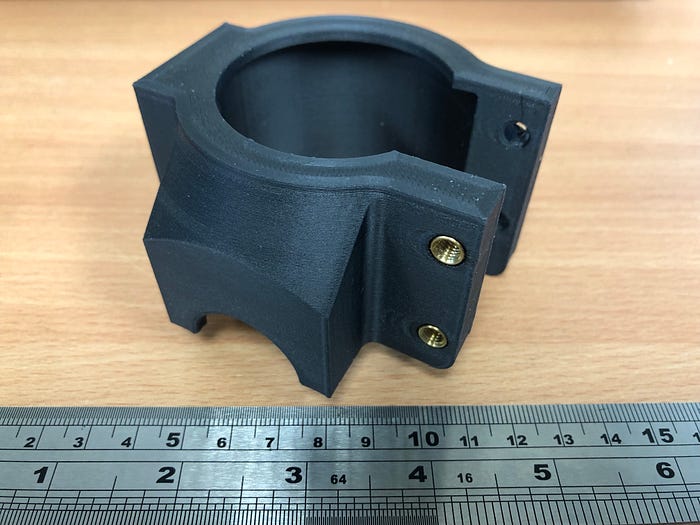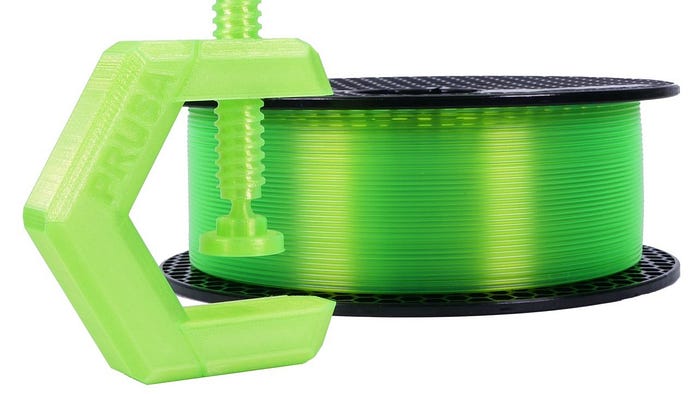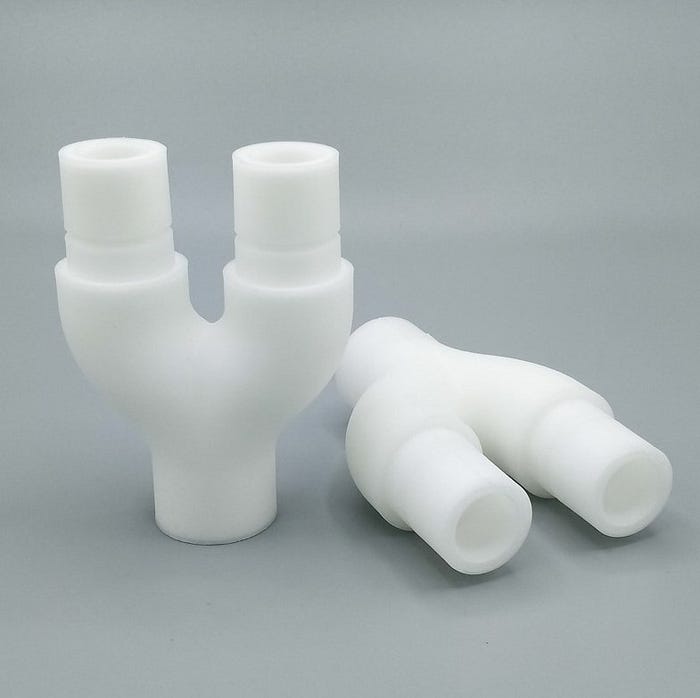
Here is an article written by our engineering team that will guide you through choosing your material for 3D printing, difficulties behind printing with these materials and why it is so expensive.
PLA is the most common material used for hobby level printing as well as being one of the cheapest materials available for prototyping. It is commonly used in Fusion Deposit Modelling (FDM). PLA comes in an array of colors as well. However due to its low glass transition temperature (Tg) of 50–60 degrees it is prone to deformation if used in high temperature or outdoor environments.
PLA has surprising amounts of fracture resistance with an ultimate tensile strength of 65MPa should your design allow for deformation.
High temperature PLA (HTPLA) is a type of PLA that allows the material to be heat treated in the oven. The heat treatment changes its material structure from amorphous to crystalline. This allows it to have a much higher melting temperature (Tm) over 150degrees before it starts to deform unlike normal PLA which does not have a defined temperature which it deforms at.
PLACTIVE is another type of PLA in which copper is infused into the filament. The copper nanoparticles are said to be highly effective in eliminating fungi, viruses and bacteria which makes it great for medical use.

Carbon fiber PLA with heated thread inserts
PETG has a soft surface which makes it vulnerable to wear but is more flexible compared to PLA. Its durability is much higher than PLA, partially due to its higher glass transition temperature which makes it a better option for mechanical components compared to PLA. Due to its better mechanical properties, PETG can be both plastic welded and machined.
However, PETG is more expensive compared to PLA and not commonly used in industrial application despite the pros described.

PETG printed custom clamp with working threads
HIPS has high impact strength, 30% lighter than PLA and cheap in terms of material cost. However, it requires a heated enclosure and a specialized surface for it to be printed on making it costly to print. Additionally, due to the need for a heated enclosure, parts that are not designed for support less additive manufacturing (especially FDM) will be difficult to print and likely require splitting and gluing of the part to ensure the design is able to be printed in the first place.
Sample of well-designed support less part printed in HIPs
Sample of well-designed support less part printed in HIPs
PP has high impact, fatigue, and heat resistance. It is also extremely flexible, waterproof and is watertight which is why it is used for household bottles such as shampoo bottles.
However, the semi-crystalline structure means that it needs to be printed in a heated enclosure which makes it prone to warping and difficult to print parts that are not specialized for additive manufacturing. Likewise, polypropylene’s inability to stick to common surfaces means special glue sticks need to be used which increases costs. Furthermore, the material itself is expensive which means printing a PP part is expensive overall.

PP printed joints used to connect pipes
ABS, the go to plastic for cheap prototyping as it is known for its high temperature resistance and decent mechanical properties.